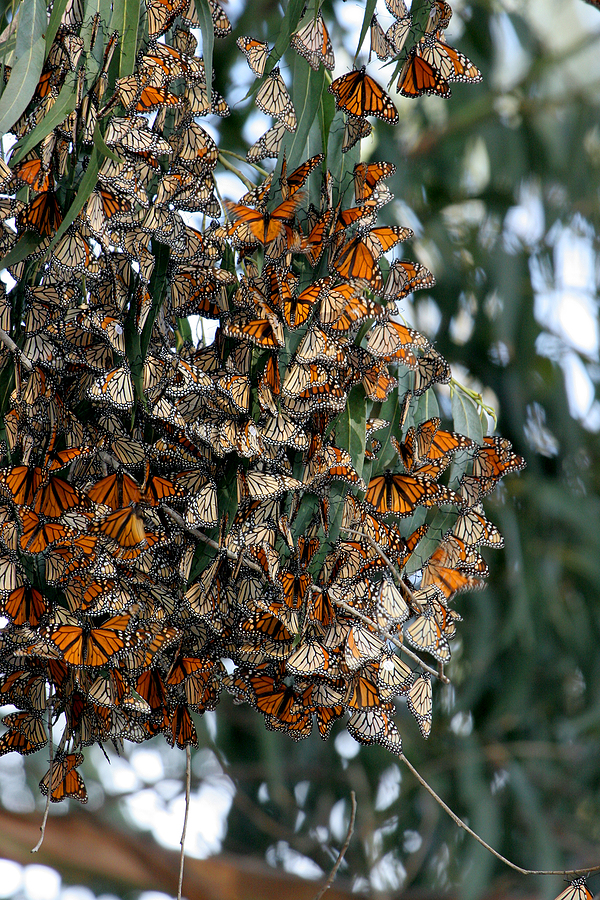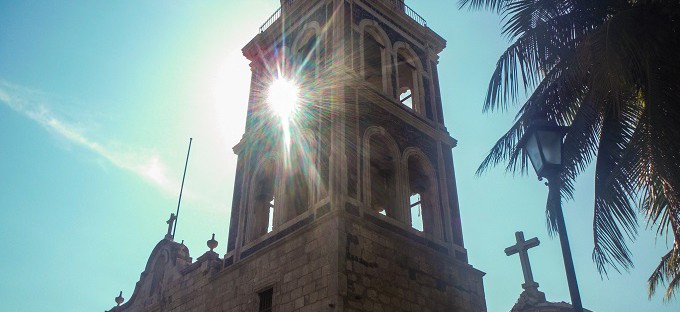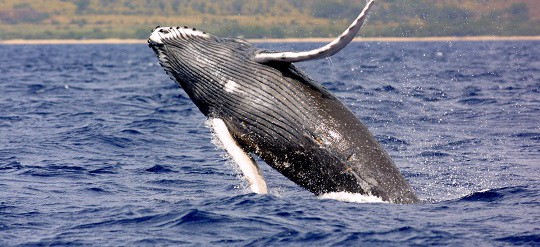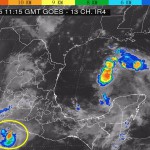The monarch butterfly is a beautiful creature that makes a 3,000-mile journey every year from the U.S. and Canada down to Mexico. For visitors that take a vacation to Mexico between November and March, plan a visit to a butterfly sanctuary to witness the incredible monarch butterfly in person. Many people find it to be one of the most rewarding and magical outdoor experiences they have had. Read more below about the Monarch Butterfly, and how you should visit a butterfly sanctuary on your next trip to Mexico.
Migration of the Monarch Butterfly
Each year in mid-November, Monarch butterflies begin arriving in Mexico. There, they nestle in fir tree forests in the eastern edge of the state of Michoacán, not far from Mexico City. Traveling in colonies of 20 million butterflies, the migrating Monarchs travel between 80-120 nautical miles per day. The speed of their migration also depends on the wind and current weather conditions, too. In order to pick up speed, the butterflies use warm-air currents to glide along and only need to flap their wings when the air currents slow down or if they need to change the direction of their flight. By taking advantage of riding the warm-air currents, they are able to conserve energy and undertake longer journeys. Also, the butterflies only travel during the day and will rest at night amongst the branches and trunks of trees.
Butterflies Arrive in Mexico
Once the Monarch butterflies arrive in Mexico, they cluster on the tree trunks and will remain in the same area for the winter. During the daytime, the butterflies will flutter in the forests enjoying the warm sun. Once the evening comes and the night air cools down, the butterflies return to the tree trunks to rest. Wondering when is the best time of year to witness the Monarch butterflies in person? In general, the best time to see the butterflies is from late January through the end of March. Prior to late January, the butterflies don’t flutter as much due to cooler temperatures during the day.
More About The Monarch Butterfly
The Monarch Butterfly is native to the North American tropics. An average adult Monarch butterfly will be about 4.5 inches in size and weigh less than one gram. On average, adult Monarchs only live for 3-4 weeks. However, they have the ability to breed a very special generation of butterflies that are born once a year near the end of the summer months. These Monarch butterflies can live up to 9 months but will not breed in the north. Instead, these special butterflies store up nectar from flowers for fuel to enable them to migrate south for the winter. In terms of their food source, milkweed plants are a principal food source for their caterpillars. Strangely enough, milkweed actually contains a chemical that is toxic to many species. However, the Monarchs are able to uniquely process the plant and store energy in the cells of its outer skin. By doing so, provides the butterfly with a powerful defense ‘shield’ to keep it safe from potential predators. With the added protection, the butterflies have a better chance of making the 3,000-mile journey south to winter in the mountains west of Mexico City.

Monarch Butterflies Gather In Wildlife Area
Visit a Monarch Sanctuary in Mexico
During your vacation to Mexico, make sure to plan a visit to a Monarch sanctuary. Witnessing the beautiful butterflies as they flutter in the sky is quite a sight to behold. January and February are the most popular months when the butterfly population is at its peak. Most sanctuaries are open to the public between 6 a.m. and 6 p.m., seven days a week. To avoid the biggest crowds, try to plan your visit during the week as weekends are considerably busier. The two most popular sanctuaries to visit are El Rosario near the town of Ocampo in Michoacán, and Sierra Chincua near the town of Angangueo in the state of Michoacán. In addition, the Mexican government oversees the Monarch Butterfly Biosphere Reserve. This protected area covers more than 560 square kilometers (350 square miles) and has been recognized by UNESCO as a World Heritage Site since 2008.
The Journey Back North
Before the butterflies begin their journey back north, each female Monarch will layover 400 eggs on the leaves of the Asclepias trees. Then, they will gather nectar from the flowers, which provides the energy they need to make the journey back north. By mid-March, some butterflies will begin fluttering in hopes of catching a ride on spring ascending air currents. These air currents will help propel them back across the border to the United States and Canada. The butterflies that were born in the mountains of Mexico will also come along for the return journey up north to the United States and Canada. The young butterflies will instinctively know where to fly as their sense of direction has been passed on genetically from their ancestors. In fact, research indicates that the butterflies may possess an “inner clock” that enables them to navigate using the sun’s position in the sky.
Ready to book a trip to Mexico to witness the Monarch butterflies for yourself? If so, contact My Vacation to Mexico at 1-800-607-7499. They are a reputable travel agency that specializes in affordable travel packages to Mexico. Plus, they work with top resorts like the Villa Group that have stringent COVID safety measures in place to keep guests safe. Don’t miss this once in a lifetime experience. Book your vacation trip to Mexico today.












